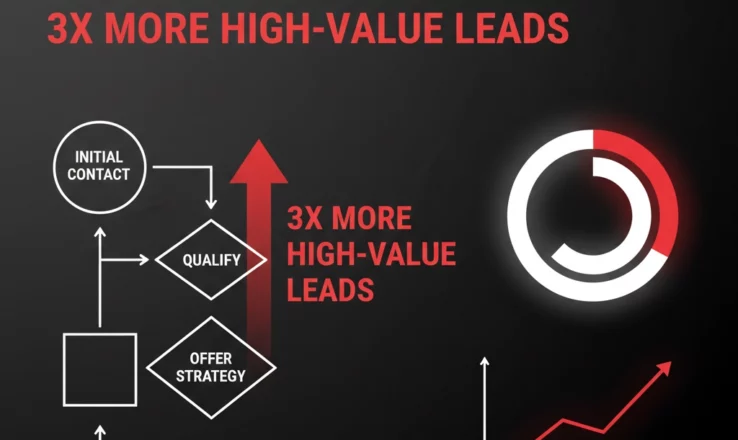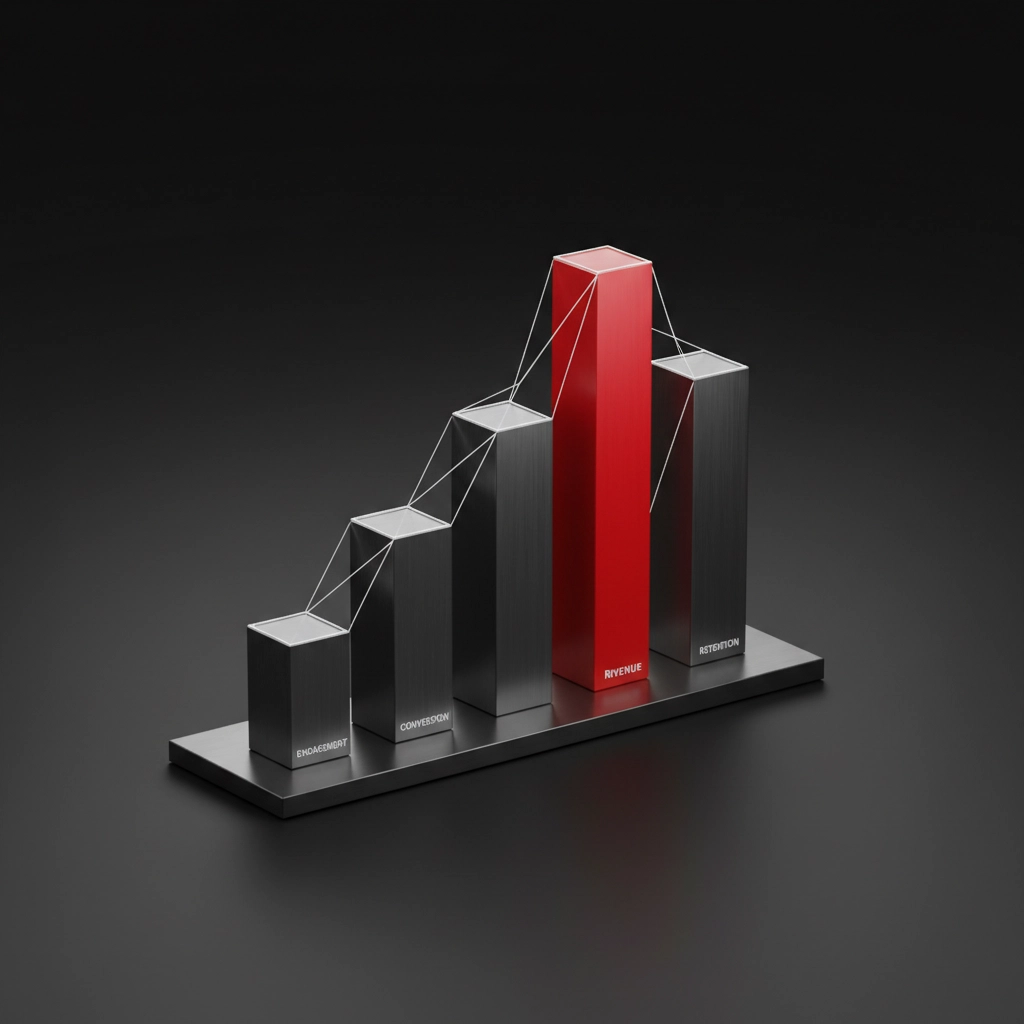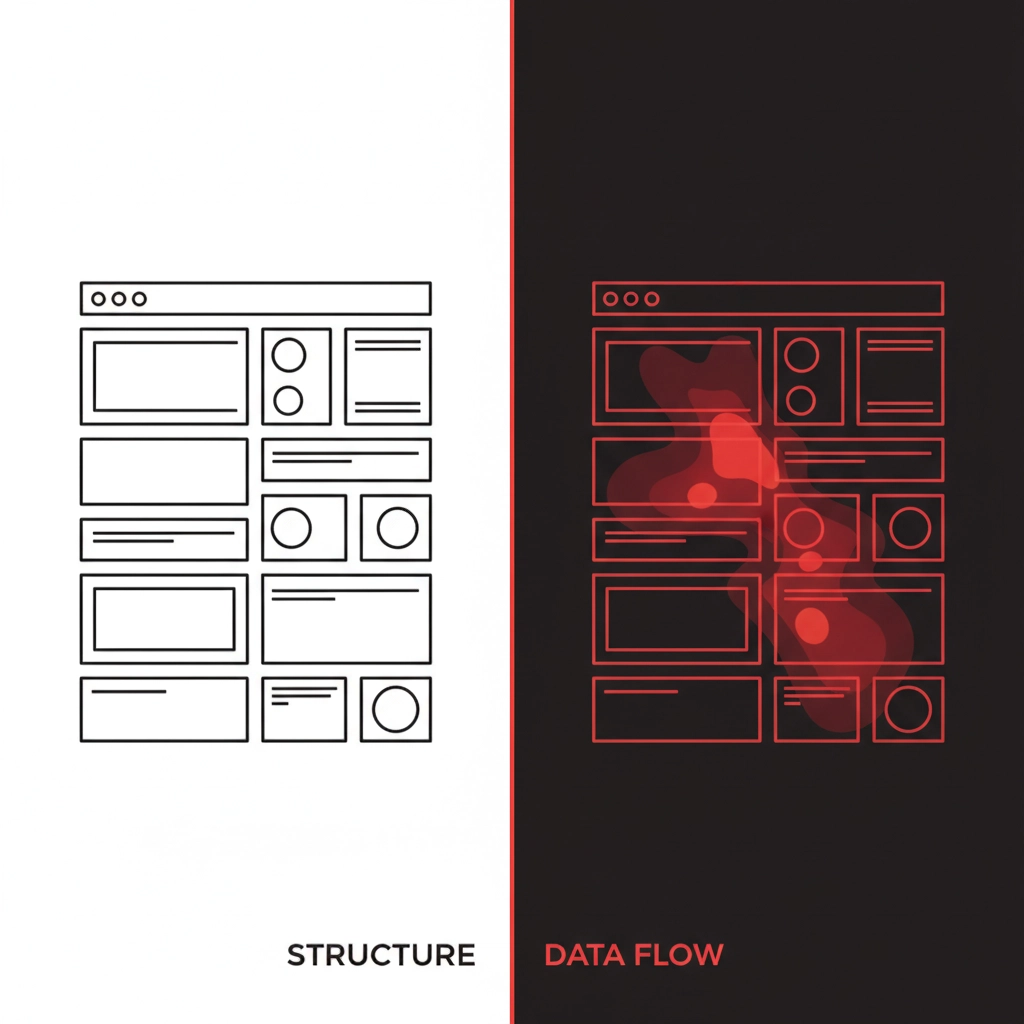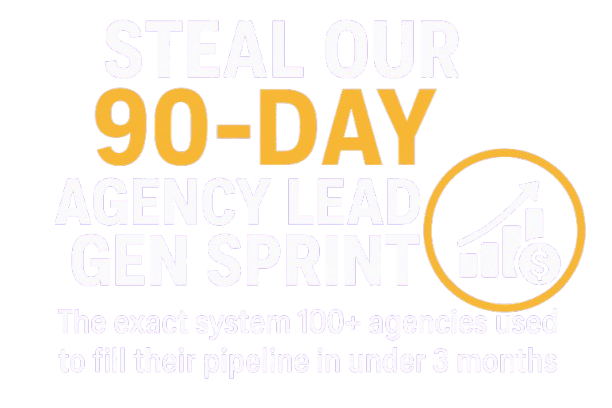
Listen, I'm going to share the exact framework I've used to help agencies triple their high-value lead flow, but here's the thing: you need to actually implement this stuff. No skimming through and thinking "yeah, that makes sense" without taking action. Ready to get your hands dirty? Good.
Stop Playing Lead Generation Roulette
Most agency owners are throwing spaghetti at the wall with their lead generation. One week they're trying LinkedIn outreach, the next they're dumping money into Facebook ads, then pivoting to cold email campaigns. Sound familiar?
Here's what I've learned after working with hundreds of agencies: the businesses that generate 3x more qualified leads aren't using secret tactics, they're using systems.
The framework I'm about to walk you through isn't theory. It's the exact process my highest-performing clients use to consistently attract premium prospects while their competitors are still chasing random tactics.
Foundation First: Build Your Data-Driven Acquisition Engine
Before you touch any marketing channels, you need to get crystal clear on who you're actually trying to reach. And no, "small business owners who need help with marketing" doesn't cut it.
Step 1: Create Your Surgical ICP (Ideal Client Profile)
Grab a spreadsheet and answer these questions for your absolute best clients:
- What specific revenue range are they in?
- What keeps them awake at 2 AM?
- What's their biggest frustration with agencies like yours?
- What outcome would make them look like a hero to their boss/board?
- Where do they go for industry information?
Don't guess on this. Actually call three of your best clients and ask them directly. Yes, right now. The insights you get from these 15-minute conversations will transform everything else you do.
Step 2: Set Up Your North Star Metrics
Most agencies track vanity metrics like website traffic and social media followers. Here's what actually matters:
- Customer Lifetime Value (CLTV): What's a client worth over their entire relationship?
- Cost to Acquire Customer (CAC): How much does it cost to land a new client?
- Lead-to-Client Conversion Rate: What percentage of qualified leads become paying clients?
- Sales Cycle Length: How long from first contact to signed contract?
Set up tracking for these four metrics before you do anything else. You can't optimize what you don't measure.

The CRAFT Method: Building Assets That Actually Convert
Now here's where most agencies screw up. They create content because someone told them they should, not because it serves a specific purpose in their conversion process.
The CRAFT method eliminates random content creation:
C – Capture Attention
R – Raise Interest
A – Address Objections
F – Force a Decision
T – Track Everything
Your Website: The 24/7 Salesperson
Your website should convert 2-5% of visitors into leads. If you're under 2%, we need to fix this immediately.
Here's the conversion optimization checklist I use with every client:
✓ Above-the-fold value proposition: Can someone understand what you do and why they should care in 8 seconds?
✓ Social proof placement: Client logos, testimonials, case study results visible within first scroll
✓ Clear next step: One primary call-to-action that stands out visually
✓ Mobile optimization: 60% of your traffic is mobile: test everything on your phone first
Content That Moves the Needle
47% of decision-makers consume 3-5 pieces of content before reaching out to suppliers. But here's the key: it needs to be the right content for each stage.
Discovery Stage Content:
- Problem-focused blog posts ("Why Your Current Agency Is Failing You")
- Educational videos (executives prefer video to text 59% of the time)
- Industry trend reports
Consideration Stage Content:
- Detailed case studies with actual numbers
- Webinars that demonstrate your process
- Comparison guides
Decision Stage Content:
- Proposal templates and pricing guides
- Client success stories
- Free strategy sessions
Create one piece of content for each stage, focusing on quality over quantity. Premium content generates 3x better ROI than mass-produced generic stuff.
The Research Advantage: Know Your Prospects Better Than They Know Themselves
Here's something most agency owners never do: they don't actually research their prospects beyond a quick LinkedIn scroll.
Deploy These Research Methods:
Session Replay Tools: Watch real recordings of how prospects navigate your website. You'll spot conversion leaks you never knew existed.
Heat Map Analysis: See exactly where people click, scroll, and abandon your pages. This data tells you what's working and what's confusing.
Direct Feedback Surveys: Ask prospects who didn't convert why they didn't choose you. The answers will sting, but they'll also show you exactly what to fix.
I had a client discover through exit surveys that prospects loved their work but thought they were too expensive: even though they were 20% cheaper than competitors. The fix? Better pricing presentation, not lower prices.

Technology Stack: Automate Without Losing the Human Touch
The right tools amplify your efforts without making you feel robotic. Here's the minimal viable tech stack:
CRM System: Track every interaction, automate follow-ups, segment prospects by readiness to buy.
Marketing Automation: Send targeted content based on prospect behavior. Someone downloads your pricing guide? They get different follow-up than someone who just reads blog posts.
Lead Scoring System: Assign points based on actions (website visits, content downloads, email opens) and demographics (company size, industry, role). Focus your time on high-score prospects.
Advanced Tactics: The Multiplier Effect
Once your foundation is solid, these advanced strategies create exponential improvements:
Personalization at Scale
Modern prospects expect individualized messaging. Use dynamic content that changes based on industry, company size, or previous interactions.
For example: A manufacturing company sees case studies from other manufacturers, while SaaS companies see tech-focused examples. Same framework, relevant execution.
Sales Playbook Development
Sales teams with structured playbooks hit quota 65% more often. Document your:
- Qualifying questions for each prospect type
- Common objections and proven responses
- Presentation templates for each sales stage
- Follow-up sequences that actually work
AI-Powered Lead Intelligence
Use AI tools to research prospects before every call. Know their recent company news, social media activity, and industry challenges. This isn't stalking: it's preparation.
Putting It All Together: Your 90-Day Implementation Plan
Days 1-30: Foundation
- Complete detailed ICP research
- Set up tracking for key metrics
- Audit and optimize your website conversion elements
Days 31-60: Content & Systems
- Create one piece of content for each buyer stage
- Implement CRM and basic automation
- Start collecting feedback data
Days 61-90: Optimization & Scale
- Analyze performance data and optimize weak points
- Add personalization elements
- Develop and train team on sales playbook
The agencies that follow this framework consistently see lead quality improve within 60 days and lead volume increase within 90 days. But here's the key: you have to actually do the work, not just read about it.
Your Next Steps
Stop trying random tactics and start building a system. Pick one element from this framework and implement it this week. Then add another element next week.
The 3x improvement in high-value leads doesn't happen overnight, but it does happen when you stop playing lead generation roulette and start following a proven process.
Which part of this framework will you tackle first? Start there, measure the results, then build on your success.
